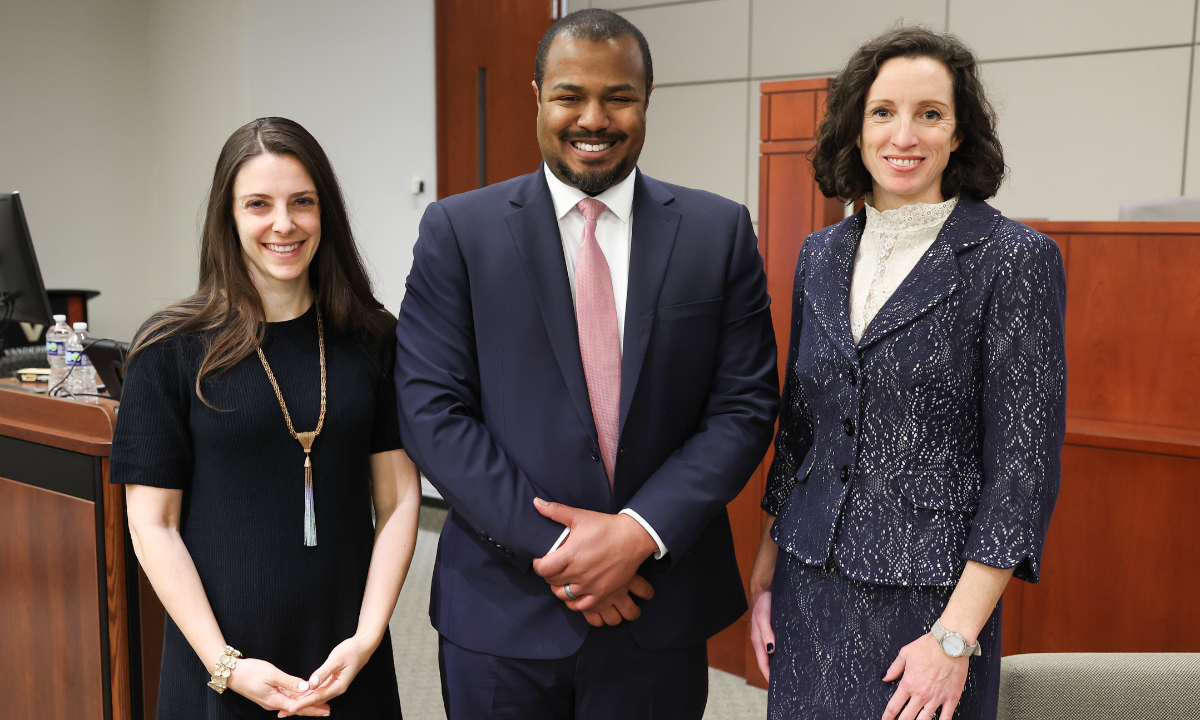By Colleen Newman
Aisha McWeay, Executive Director of Still She Rises and a former Nashville Defender, spoke to Vanderbilt Law students about the importance of holistic defense in reducing the number of people entering the United States prison systems, and how it aligns with the emerging field of restorative justice. The discussion was sponsored by the Black Law Students Association and the Law Students for Social Justice.
What is Restorative Justice?
McWeay began the discussion by defining restorative justice and where it is seen in the criminal legal system. “Restorative,” in this context, refers to the perpetrators of crimes. In the current system, McWeay noted that criminals who enter prison often undergo treatment and experiences that are not conducive to their well-being, and when they leave, they often end up back in that same place. The goal of restorative justice is to ensure that criminals leave prison better than how they arrived and relieve people of harm suffered in or out of prison. McWeay emphasized that punishing the criminal does not erase the fact that the crime happened, and in a situation where the criminal is not punished, they can fundamentally improve themselves when given the proper support.
Restorative Justice in Our Legal System
McWeay does not believe that restorative justice practices are commonplace in the U.S. legal system. She asserted that there is a single goal of the current system: punishment. The intersection of restorative justice and holistic defense is the alternative to the traditional criminal defense system. Even though it is a novel practice, McWeay noted that some of the first pilot cases are showing up in the juvenile justice system. One in particular was launched in Nashville, Tennessee, where a program for youth offenders was created to combat recidivism. Restorative justice has not translated into the adult justice system or to extreme cases of violence, though, which McWeay believes is a missed opportunity, because “where there is great harm, there is great potential for healing.”
Holistic and Traditional
In the criminal system, the majority of cases are related to issues of poverty, mental health, and substance possession. In order to combat the cycle of repeated offenses and extreme crime, these entry points must be addressed. That is where holistic defense comes in. Its function is to look at the criminal as a whole and take into account societal pressures and inequalities. Holistic defense does not just look at the crime that was committed. By doing so, support is geared toward the individual, allowing them to take one step forward toward a life of restoration. McWeay stated that neither traditional nor holistic defense is more effective than the other, but their key structural difference is what might give one more successful outcome than the other. After experiencing both sides of the coin– working a decade in public defense and founding a nonprofit that provides holistic representation– McWeay believes that while they are both driven by a similar mission and passion for advocacy, public defense is limited by charters that dictate where resources, time, and money are directed.
The debate about whether prisons truly deter crime will be an ongoing one, but for McWeay, the growing adoption of holistic defense shows the importance of slowing crime at its root cause, benefitting the most vulnerable communities. “Prisons are a business,” she said, “and we want them to lose all their customers.”


